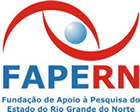Home
Introduction
The third International Conference on Graph Transformation ICGT 2006 along with several satellite events, will be held in Natal (Rio Grande do Norte, Brazil) in the third week of September 2006. It follows ICGT 2002 and ICGT 2004 held in Barcelona and Rome and a series of six international workshops on graph transformation with applications in computer science held from 1978 to 1998 in Europe and the USA. The conference takes place under the auspices of EATCS, EASST, and IFIP WG 1.3. The proceedings of ICGT will be published by Springer-Verlag in the Lecture Notes in Computer Science series. The conference is co-located with the Brazilian Symposium on Formal Methods (SBMF 2006).
Contact
URL: http://www.dimap.ufrn.br/icgt2006
E-mail: icgt2006 at dimap.ufrn.br
Scope
Graphical structures of various kinds (like graphs, diagrams, visual sentences and others) are very useful to describe complex structures and systems in a direct and intuitive way. These structures are often augmented by formalisms which add to the static description a further dimension modelling the evolution of systems via any kind of transformation of such graphical structures. The field of Graph Transformation is concerned with the theory, applications and implementation issues of all these formalisms.
The theory is strongly related to areas such as graph theory and graph algorithms, formal language and parsing theory, theory of concurrency and distributed systems, formal specification and verification, logic and semantics. The application areas include all those fields of Computer Science, Information Processing, Engineering and Natural Sciences.
Topics of interest include, but are not limited to, the following.
On the more theoretical side:
- General models of graph transformation
- Node-, edge-, and hyperedge replacement graph grammars
- Parallelism, concurrency, distribution
- Term graph rewriting
- Network computing
- High-level and adhesive replacement systems
- Hierarchical graphs and decompositions of graphs
- Logic expression of graph transformation properties
- Graph theoretical properties of graph languages
- Geometrical and topological aspects of graph transformation
- Automata on graphs and parsing of graph languages
- Analysis and verification of graph transformation systems
- Structuring and modularization concepts
- Semantics of languages based on graph transformation
- Semantics of UML and other visual modelling techniques
On the more applied side:
- Implementation of programming languages
- Massively parallel computing
- Bioinformatics and system biology
- Bio-computing and DNA-computing
- Software architecture
- Mobile systems design
- Model transformation
- Model based software development
- Development of meta CASE tools
- Visual languages and environments
- Graph tool development
- Graph based models of computations
- Petri nets
- Rule- and knowledge-based systems
- Pattern generation and picture processing
- Layout algorithms
- Software quality and testing
- Security
- Graph and graph transformation exchange









